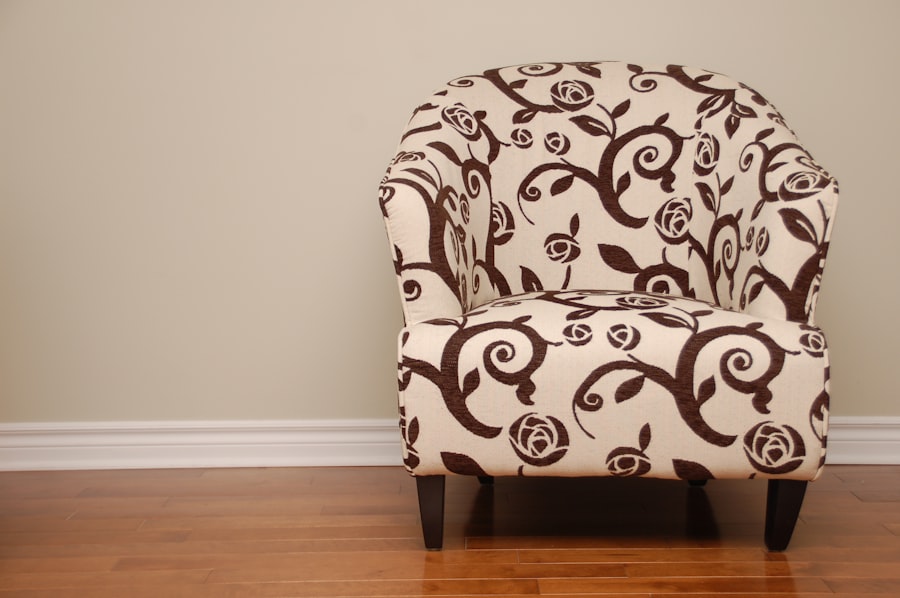In recent years, the trend of refinishing thrifted furniture has gained significant popularity among DIY enthusiasts and home decorators alike. This practice not only allows individuals to breathe new life into old, forgotten pieces but also promotes sustainability by reducing waste. Thrifted furniture often comes with a unique character and history that mass-produced items lack, making each refinished piece a one-of-a-kind treasure.
The process of refinishing can be both rewarding and therapeutic, offering a creative outlet for those looking to express their personal style while also saving money. Refinishing thrifted furniture is more than just a practical endeavor; it is an opportunity to connect with the past. Each piece carries its own story, and by restoring it, one becomes a part of that narrative.
Whether it’s a vintage dresser, an antique chair, or a rustic table, these items can be transformed into stunning focal points in any home. The journey of refinishing not only enhances the aesthetic appeal of the furniture but also instills a sense of accomplishment and pride in the creator.
Key Takeaways
- Refinishing thrifted furniture is a cost-effective and creative way to update your home decor.
- When selecting a piece of furniture, look for solid wood pieces with good bones and minimal damage.
- Properly preparing the furniture by cleaning, sanding, and repairing any damage is crucial for a successful refinishing project.
- Choose the right refinishing technique based on the type of wood and the desired end result, such as painting, staining, or distressing.
- Necessary tools and materials for refinishing furniture include sandpaper, paint or stain, brushes, and protective gear.
Selecting the Right Piece of Furniture
Choosing the right piece of furniture to refinish is crucial to the success of any project. Thrift stores, flea markets, and garage sales are treasure troves filled with potential candidates, but not every item will be suitable for refinishing. It is essential to look for pieces that are structurally sound, as this will save time and effort in the long run.
Inspecting joints, legs, and surfaces for damage or wear can help identify items that are worth the investment of time and resources. Beyond structural integrity, the style and design of the furniture should resonate with the individual’s taste and the overall aesthetic of their home. A mid-century modern chair may appeal to one person, while another might be drawn to a shabby chic side table.
The key is to select a piece that inspires creativity and aligns with personal preferences. Additionally, considering the intended use of the furniture can guide the selection process; for instance, a sturdy dining table may be more practical than a delicate accent piece for a busy household.
Preparing the Furniture for Refinishing

Once the perfect piece has been selected, the next step involves thorough preparation before diving into the refinishing process. This stage is critical as it sets the foundation for a successful transformation. First, it is essential to clean the furniture meticulously to remove any dirt, grease, or old finishes that may interfere with the refinishing process.
A mixture of warm water and mild soap can work wonders in restoring the surface to its original state. After cleaning, the next step is to assess any repairs that may be necessary. This could involve tightening loose joints, filling in scratches or dents with wood filler, or even replacing missing hardware.
Taking the time to address these issues ensures that the final product will not only look good but also function well. Once repairs are complete, sanding the surface is crucial for creating a smooth base for paint or stain. This process helps to remove any old finish and prepares the wood to absorb new products effectively.
Choosing the Right Refinishing Technique
| Refinishing Technique | Pros | Cons |
|---|---|---|
| Painting | Easy to do, wide range of color options | May require multiple coats, can chip or peel over time |
| Refinishing | Can restore original look, durable finish | Requires professional skills, expensive |
| Re-glazing | Can change color and finish, long-lasting | Requires professional application, limited color options |
Selecting an appropriate refinishing technique is vital in achieving the desired look for the furniture piece. There are several methods available, each offering unique results depending on the type of wood and finish being used. For those looking to maintain a natural wood appearance, staining may be the best option.
Stains come in various shades and can enhance the grain of the wood while providing protection against wear and tear. On the other hand, painting offers a more dramatic transformation and allows for endless customization options. Chalk paint has become increasingly popular due to its matte finish and ease of use, making it ideal for beginners.
For those seeking a more polished look, traditional oil-based or latex paints can provide a durable finish that stands up to daily use. Ultimately, the choice of technique should reflect both personal style and practical considerations regarding maintenance and durability.
Necessary Tools and Materials
Before embarking on a refinishing project, it is essential to gather all necessary tools and materials to ensure a smooth workflow. Basic tools typically include sandpaper or a power sander, brushes or rollers for applying paint or stain, and rags for wiping off excess product. Additionally, safety gear such as gloves and masks should not be overlooked, as refinishing can involve exposure to dust and fumes.
In terms of materials, selecting high-quality paint or stain is crucial for achieving professional-looking results. A good primer can also enhance adhesion and durability, especially when painting over previously finished surfaces. Other materials may include wood filler for repairs, sealants or topcoats for added protection, and any decorative hardware that may be needed to complete the look.
Having everything organized and ready before starting will help streamline the process and minimize interruptions.
Step-by-Step Refinishing Process
The refinishing process can be broken down into several manageable steps that guide individuals through transforming their thrifted furniture. First, after ensuring that all necessary tools and materials are at hand, one should begin by disassembling any removable parts if applicable. This could include taking off drawers or removing hardware to make painting or staining easier.
Next comes sanding, which involves working through various grits of sandpaper to achieve a smooth surface. Starting with a coarser grit helps remove old finishes and imperfections, while finer grits prepare the surface for finishing touches. Once sanding is complete, it is important to clean off any dust before applying primer or stain.
Following this preparation phase, individuals can apply their chosen finish using brushes or rollers, ensuring even coverage and allowing adequate drying time between coats.
Adding Personal Touches and Customization
One of the most enjoyable aspects of refinishing thrifted furniture is the opportunity for personalization and customization. After achieving a base finish, individuals can explore various ways to make their piece truly unique. This could involve adding stencils or decals for decorative flair or experimenting with different painting techniques such as distressing or color washing.
Furthermore, hardware can play a significant role in enhancing the overall aesthetic of a piece. Replacing old knobs or handles with modern or vintage options can dramatically change its appearance. For those who enjoy crafting, adding elements like fabric upholstery or decorative trim can elevate a simple piece into something extraordinary.
The possibilities are endless when it comes to customization, allowing individuals to express their creativity fully.
Tips for a Successful Refinishing Project
To ensure a successful refinishing project, there are several tips that can help guide individuals through the process. First and foremost, patience is key; rushing through any step can lead to unsatisfactory results. Taking time to allow each coat of paint or stain to dry thoroughly will prevent smudging and ensure a smooth finish.
Additionally, keeping a clean workspace is essential for maintaining focus and organization throughout the project. Regularly cleaning brushes and tools will also prolong their lifespan and ensure optimal performance. It can be beneficial to document each step of the process through photos or notes; this not only serves as a record of progress but can also provide valuable insights for future projects.
Caring for Refinished Furniture
Once the refinished furniture has found its place in a home, proper care is essential to maintain its beauty and longevity. Regular dusting with a soft cloth will help prevent dirt buildup while avoiding harsh chemicals that could damage the finish is crucial. For painted surfaces, using coasters and placemats can protect against scratches and heat damage.
In addition to routine cleaning, periodic touch-ups may be necessary over time. This could involve reapplying sealants or addressing any minor scratches that may occur from everyday use. By taking proactive measures in caring for refinished furniture, individuals can ensure that their hard work continues to shine for years to come.
Displaying and Incorporating Refinished Furniture in Your Home
Integrating refinished furniture into home decor can be an exciting endeavor that allows individuals to showcase their creativity while enhancing their living spaces. Thoughtful placement is key; considering factors such as lighting and surrounding decor can help highlight each piece’s unique features. For instance, placing a beautifully refinished side table next to a cozy reading nook can create an inviting atmosphere.
Moreover, mixing different styles can add depth and interest to a room’s design. A modern refinished chair can complement traditional elements while providing contrast that draws attention. Utilizing accessories such as cushions or throws can further tie together various design elements while ensuring comfort and functionality remain at the forefront.
Final Thoughts and Inspiration for Future Projects
Refinishing thrifted furniture offers an enriching experience that combines creativity with sustainability. As individuals embark on this journey, they not only create beautiful pieces but also contribute positively to environmental conservation by repurposing items that might otherwise end up in landfills. The satisfaction derived from transforming an overlooked piece into something functional and aesthetically pleasing cannot be overstated.
For those inspired by their first project, there are countless opportunities for future endeavors—whether it’s tackling larger pieces like cabinets or experimenting with different techniques such as decoupage or upholstery work. Each project presents an opportunity for growth and learning within the realm of DIY furniture refinishing. Ultimately, this creative pursuit fosters not only personal expression but also a deeper appreciation for craftsmanship and design in everyday life.
If you’re interested in giving new life to old furniture, you might enjoy exploring the world of music while you work on your project. For instance, listening to some classic tunes can make the process more enjoyable and inspiring. One legendary band that has stood the test of time is Queen. Their music, with its dynamic range and timeless appeal, can provide the perfect soundtrack to your weekend of refinishing thrifted furniture. To learn more about why Queen remains a legendary band, check out this related article. Whether you’re sanding, painting, or varnishing, having some iconic tracks playing in the background can make the experience even more rewarding.
FAQs
What is the benefit of refinishing thrifted furniture?
Refinishing thrifted furniture allows you to give old, worn-out pieces a new lease on life. It’s a cost-effective way to update your home decor and add unique, personalized pieces to your space.
How long does it take to refinish thrifted furniture?
Refinishing thrifted furniture can typically be completed in one weekend, depending on the size of the piece and the extent of the refinishing work required.
What are the basic steps involved in refinishing thrifted furniture?
The basic steps for refinishing thrifted furniture include cleaning the piece, sanding it down, applying a new finish or paint, and adding any desired hardware or accents.
What materials and tools are needed for refinishing thrifted furniture?
Materials and tools needed for refinishing thrifted furniture may include sandpaper, paint or stain, brushes or rollers, protective gear, and any additional hardware or accents for the piece.
Are there any tips for successfully refinishing thrifted furniture?
Some tips for successfully refinishing thrifted furniture include thoroughly cleaning the piece before starting, taking your time with sanding and painting, and choosing a finish or paint color that complements your existing decor.





